Rishad Tobaccowala's Blog, page 4
February 16, 2025
4 Keys to Leading Today.
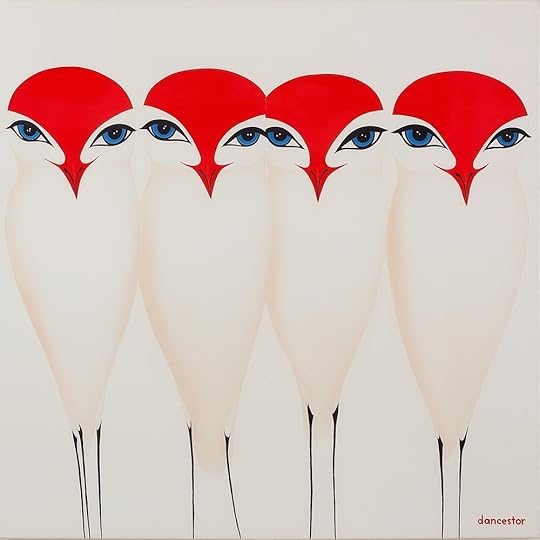
Illustration by Lemmywinks via Midjourney
We have entered an age of de-Bossification.
In many industries, particularly “White-collar” ones, the era of “bosses” is in decline.
Less of a clamoring for boss like traits of controlling, managing, measuring, allocating, evaluating and checking in.
There is a rise in the need for leaders and their traits of being guides, coaches, mentors, role-models, creators, pioneers and builders.
This shift has been driven by changing demographics, the spread of technology, the rise of unbundled and distributed work, new behavior expectations, and a re-definition of what “work” is including the rise of fractionalized and free-agent talent who work for themselves or at multiple jobs and are expected to comprise most of the workforce in the US by the end of the decade.
Here are four core traits and how we can all build them.
1. A Passion for Excellence.To be a leader in any field, at any level one must build proficiency.
One needs to learn a craft, hone skills, continuously improve, and remain relevant and up to date.
Experience while it will matter will matter less while expertise will matter more.
Too many “leaders” slip into irrelevance by letting their skills atrophy. Today due to the rapid change in demography and technology the half-life of whatever one has learned rapidly decays and the fuel tank of competence needs to be continuously filled.
Leaders set high standards for quality of product and service delivered, financial results and what they expect of people around them
Excellence is what attracts customers, talent and financial results.
And helps create world class cultures.
The best leaders never stop growing.
They are continuously learning and honing and upgrading their craft.
They do and do not just manage.
They seek not to blame but to understand, to learn versus believing they know it all.
They realize that only if they grow and the people around them grow in skills, reputation and knowledge will the company and its customers and clients grow.
They invest in learning, taking bets on the future, challenging existing business models, looking outside their categories for inspiration and potential disruption.
2. Face and Accept Reality.A key to leadership is to solve challenges and address problems.
This requires confronting issues versus looking away or hoping some form of magical thinking will make them go away.
One cannot hope to get people to follow if they suspect one is not addressing real issues and challenges however difficult they may be.
Leaders embrace data and know math matters.
They accept that facts are stubborn things.
And while it may be forestalled for a while truth has a habit of breaking in.
Facing hard facts and addressing reality does not mean defeat or pessimism. But it is the first step in making things better.
To have a solution one must understand the problem.
This often requires creating an environment where people feel free to call out the problem and note that the brown moist thing that everybody is staring at around the conference table or on the Zoom screen is not a brownie but a turd.
Great leaders acknowledge mistakes. They know they do not have all the answers. This means they are open to criticism and correction, and they surround themselves with skill sets that offset and balance their areas of weakness.
3. Empathy combined with VulnerabilityLeaders bring about change and achieve goals by bringing other people along with them.
To do so it is key to understand where people are coming from. What their fears, concerns, challenges as well as hopes, desires and dreams are.
A simple way is to ask four questions.
a) What is on your mind?
b) What else?
c) If you were not doing this, what would you be doing or how could things be better?
d) How can I help?
Vulnerability is strength and not a weakness.
By speaking about things, one worries about, one reveals humanity and comes off as believable.
It makes other people step up to try to help and offset a person’s concerns or lack of competence with their or other people’s complimentary skills.
4. Continuous Improvement.One improves leadership skills slowly over time and it is a constant effort.
Some days one improves and other days there are setbacks that one learns from. A practice of continuous improvement is what drives not just success for athletes but for all people.
The day we stop learning we stop growing and we begin dying.
By being accountable for our own feedback and by being comfortable helping others with feedback to unleash their growth is a sign of not just successful businesspeople but people who find success in every component of life.
Feedback is a key to growth and the journey forward.
1. Scan for signals: People are constantly providing feedback even if they are not vocalizing it. In some instances, you may gauge it in numerical signals from how well your writing is read, reacted to, or shared or whether you are invited to key meetings. Other times it is to watch facial and body language. You learn a lot by reading a room or a Zoom gallery.
2. Ask for feedback on a regular basis: One can do this with three simple questions which by the way they are framed ensure people are comfortable helping you since they are positive in tone:
a. What worked well?
b. If/when I do this next time what could be better?
c. Who do you think does what I need to do well and where can I learn more?
3. End of Day/Week Self Review: Most people know in their gut what worked or went well and what did not. Many successful individuals end the day or week with some variation of a quick review:
a. The Work: What went well with my work product that I feel proud signing it and what could have gone better.
b. The Team: What felt good and productive in the way I interacted with people and where could I have been better in some ways in handling my or someone else’s emotions.
c. The Improvement: What little improvement did I manage to make today or this week? A new habit. Learning a new approach. Strengthening a relationship.
Everyone can be a leader. We must sculpt at the block of marble we are to let the leader out just as Michelangelo did to let David emerge.
A new era of work requires a new era of leadership.
Rethinking Work: https://rethinking-work.io/
February 9, 2025
What Next? Fifty Year Careers.

Image by Sebdunedin using Midjourney
If we are lucky enough to live long lives, we all will age.
In 1900 life expectancy was 46 years.
Today in most countries the average life expectancy is around 78 years and with advances in technology this could soon be closer to 90 years.
Careers that lasted 30 years now could last 50 or even 60 years.
If one retires from a full-time job or primary career at 60 one still may have 30 years ahead of them which is why today many institutions and firms are rethinking careers and helping guide next acts.

Recently I had Seth Green who is the Dean at the University of Chicago Graham School on What Next? the podcast. The Graham School is a cognitive boot camp for continuing learning wherever you are in the world. The University of Chicago has also recently launched the Leadership in Society Initiative and the Imagine Pathways program for executives exploring their next chapter.
Seth Green’s insights and perspectives are not just for people in their fifties and sixties but for those in their twenties and thirties. Everybody who listens to my forty minute conversation will come away thinking very differently about their future and their careers.
After all, as Ann Dillard says ….how we spend our time is how we spend our lives.
Here are just a few of the discussion points to give you a flavor of the conversation.
1. Aging is a “prejudice against our future selves”. Avoiding thinking about or thinking negatively about aging or our future selves is a form of self-discrimination.
2. Many of us will “fail” retirement. A lot of retirement planning is about making sure one has the financial means to retire and how to remain healthy but that is not enough. Most people who can stop working soon find themselves without purpose or meaning or even identity since work is so central to identity, community, purpose and growth. The question of “Why am I waking up in the morning?” is rarely answered day after day after day with “To play golf” or “To travel”.

3. AI, Time and the rapidly declining half-life of Knowledge: Just as careers are getting longer the half-life of knowledge is declining faster and faster. Even if we are 30 our skills may lead to a forced retirement at 35 or 40 unless we upgrade and reinvent our skills.
The chart above is how AI has impacted the demand for software engineers. Remember how we were told to learn code and Mandarin was the future? Well AI enables software engineers to be far more productive than ever before and in many cases, replaces most of their tasks. And if you have the latest Samsung phone it does real time translation between languages.
Without continuous learning we are all becoming rapidly obsolete. Transformation no longer waits for retirement but is happening to us all the time.
4. To anticipate the future and to understand meaning we can learn from the past including when previous technology shifts happened.
Big ideas and approaches and insights are not only what we invent today but what have stood the test of time and trial. Too many of us believe we are discovering answers for the first time when they have been discovered and explained many times before.
Find what endures to endure.
Connect to what was to ensure one can connect to what will be.
It is important to learn what is important before it is too late.
5. Extrinsic Vs Intrinsic Purpose: In the first parts of our careers, we are driven by extrinsic goals such as money, fame, power, honing craft and seeking promotions. But later in our career or our second careers these extrinsic goals once achieved do not pull and tug or motivate as much as before and we need to know what drives us, what makes us happy and what is meaning. While the first mountain was driven by extrinsic purpose in later career one is driven by intrinsic meaning. Most successful people in their first careers find ways to discover their meaning and inner compass and align their careers to it and so easily make the shift to the second mountain.
What brought us and made us happy at the apex of our first careers are unlikely to carry over to our next act. How can we take what we are today and the best of yesterday but reinvent ourselves for the future? Often by revisiting vision, mission and purpose.
6. Cult vs Culture: If one does not know what one believes in and which way our compass points we can easily be magnetized in the direction of the crowd, the trend and to which ever our firm bends. Too many companies who believe “this is the way” and “our way or the highway” are not really cultures but cults.
7. Learning to travel lightly: Too many successful people cannot let go of the trappings of their first careers later in life. The retinue of handlers, the first-class flights, the genuflecting of minions and being the center of attention.
Seth shares the case of a legendary marketing professor and dean, Harry Davis who at the end of his deanship had to move to a smaller office and could only take a section of his library. He decided to leave behind all the marketing books even though he had built his career in the craft of marketing and only take the leadership books because that is what his career was going to be.
One must learn to travel lightly and let go parts of the luggage of the past every new stage of a career.
8. Do not live in other people’s minds: Too often we select careers and jobs because of what other people think vs what we are good at or find meaning in. We live in other people’s minds and give them the remote control of our lives.
9. The numbers that matter are not the numbers one thinks matter: For the lucky and privileged the size of the 401K beyond a certain point matter less and less. Adding resources has significantly declining returns. What matters are the numbers in the medical chart (health), the numbers of friends, the numbers of healthy relationships and the number of people one has helped. If one knew early on when we rightly focus on financial goals and building wealth that there were far more important goals, we would manage our careers and relationships differently earlier in our careers.
10. We should not price ourselves out of our dreams: Too many people find themselves doing a job they do not truly enjoy or love, much longer than they need to because the job creates the ability to fund a certain lifestyle. One’s lifestyle is rarely the dream. Funding the lifestyle often prices us out of the careers and vocations that truly resonate with us, but we now cannot afford to pursue.
Listen to Seth and dozens of the world’s most amazing leaders on What Next? This week we have Kass and Michael Lazerow who sold their company to Salesforce for 850 million dollars and are investors in companies like Liquid Death talk about the coming era of Entrepreneur, other recent episodes include Andrew Essex now of TCS and formerly a leader at Tribeca and the founding CEO of Droga 5 on AI and creativity and Peter Naylor of Snap, Netflix and NBC pedigree speak of the future of sports and much more. Wide ranging topics, global perspectives, amazingly distinguished and diverse guests sharing their best thinking and distilled insights on what next to help us all grow and transform…
For more about how to understand and navigate the future of work check out Rethinkingwork.io
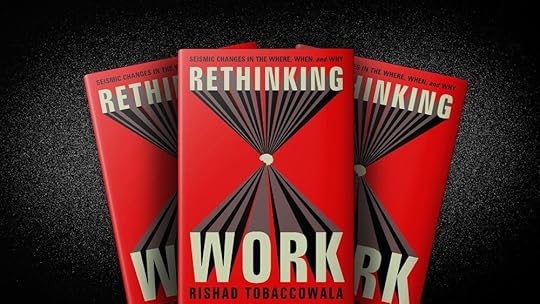
February 2, 2025
Soft is the New Hard.

The Walk through Life Howard Walker
These days everywhere the mood seems to be war like and belligerent.
We hear about getting into “Founder Mode”, committing to “ Hardcore” and the need for more “Masculine Energy”.
We are told its time to go to battle, get into the trenches, defeat and crush all that comes in the way.
The end justifies the means.
Outcome is all.
Too bad any collateral damage that may result.
Maybe.
Or maybe not.
When two rocks hit each other both rocks lose parts of themselves in the battle. Its loud and hard but even the winning rock is bruised and chipped.
But water flows over rock.
In time it erodes the rock to nothing and keeps flowing.
Maybe soft overcomes hard by understanding the importance of grace, flow and connection.

Reflection Jiabin Zhu
Grace.Grace is a fusion of demeanor and deportment.
The graceful combine a generosity of spirit, a sense of respect for others and a humility regardless of their level of excellence and skill.
Generosity of spirit in understanding that much of what is meaningful is not a zero-sum game.
Respecting others by being aware of them and their needs and backgrounds.
Humble in not losing one’s sense of perspective that everybody’s achievement while significant are due to a combination of many factors including luck, opportunity, inheritance, and the specific time and not just due to skill and hard work.

I Climbed a Mountain Steve Walls
Flow.When in a state of flow an individual is inside and outside time.
Deeply immersed in something while extracted from the ordinary.
It can come in many ways including working on something which is challenging to stretch one but not so difficult that one cannot achieve positive outcomes.
It can come from being immersed in making things, building things, and creating things.
And from helping people grow, learn and flourish.
And it comes from learning and seeking wisdom.
In being able to connect the dots and see and understand things in ways that give one joy.

A Ganges Tale Thibault Gerbaldi
Connection.Successful and happy people seems to have strong relationships to other people and to a higher cause or purpose.
Humans are social beings and most need some form of connection. The ability to invest and grow connections tends to be associated with joy.
We are living in an inter-connected and multi-polar world of 8 billion people with countries proud of their history and hopeful for tomorrow that all want a place and voice in the future.
Connection turns data into intelligence in AI, a series of words into stories that move us and connection works via genetics into progress across centuries.
Generosity. Respect. Humility engender Grace.
Creating, Learning, Building enable Flow.
Relationships. Purpose. Spirituality elicit Connection.
Intriguingly these are human and not specific to an industry, a gender, a race or a country.
They sometimes result in fame, power, and money but they are rewards in themselves.
Wherever you go, wherever you are and across the time they will give you strength and joy and often bring joy to those around you.
Soft is the new Hard.
My new book Rethinking Work is out this Tuesday (4 February 2025). Writing and ideas that will lift you, your company and your career. More here: Rethinkingwork.io

January 26, 2025
The Future of Work.
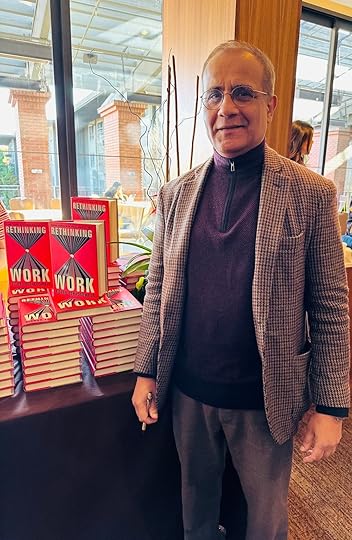
Next week (Feb 4) my second book Rethinking Work on which I have worked for two years will be published by HarperCollins in the US and India and then the rest of the world very soon after. It will be available as a hardcover, an ebook that can be read on any platform on any device, an audio book and on Kindle.
If you order it today you will have it on Feb 4. Here are all the places to order from including Amazon, Walmart, Barnes and Noble, Target, Independent Book Stores and more. For those ordering in India here is the link
The photograph above with me and stacks of the book before publication date is because HarperCollins shipped them early to a Wine Industry Conference in Monterey California that I was speaking at . HarperCollins has also agreed to ship books for events at American Express in New York, Bain Capital and their Portfolio CEO’s in Boston, the IAB Annual Leadership Meeting in Palm Springs and Nielsen’s leadership conference in Georgia all occurring this coming week before book launch.
I am now a traveling salesman!
Rethinking Work illustrates how every individual whether one is a CEO, a team leader, a middle manager or a new employee of any type and size of company in any country or industry can thrive during a period where work will transform more than it has in five decades!
If you find the writing in this thought letter worth your time, you might find the book a great resource, a tool, and a guide filled with new ideas, approaches, frameworks as well as perspectives, provocations , points of view and most importantly plans of action.
And like my first book each chapter is a book of its own versus the same chapter repeated a dozen times. There are chapters on developing reimagining strategies, recalculating financials, retraining the work force and how best machines and humans can align and what it will take to lead in the new era.
The book is likely to change not just how you think about your work and career but every aspect of your firm from strategy, to financial measurement, to talent development and organizational structure.
The book will be supported by a multi-media site, a You-Tube channel, a series of workshops, many other resources and partner as the Rethinking Work platform. You can already watch videos, listen to conversations and access research in the first baby step iteration of the platform here.
Below is a 90 second overview of the book followed by some perspectives on how work and industry will change in the next five years or less.
Some thoughts on the Future of Work.1. Most companies will have significantly fewer full time employees than they have now because of in addition to AI, companies will leverage marketplaces and the growth of fractional employment.
2. There will be far more companies in the future. This year there will be a record 6 million new firms launched in the US alone and this is likely to grow exponentially as a combination of distributed work, new technology, market places and side hustles, low code and no code solutions make it easier than ever to create and scale new firms.
3. The least important challenge in the future of work is where one works. Companies who are focussed on getting everybody back to the office are asking the wrong question. The question should be how to maximize the impact of in person interaction in ways that are personalized and customized to Client needs, type of job, seniority, personal situation and market place dynamics for any particular expertise.
How can a company talk about personalization, agility, flexibility, cost competitiveness and being future forward and then enforce a one size for all model that insists everybody return to a container of the past and be expected to be taken seriously as a company of tomorrow and hope to compete with new competitors starting today that start with a blank sheet of paper that reflect new mindsets, new marketplaces and new technology?
4. We have entered an age of de-bossification as people are rejecting “boss- like” behavior and are looking for leaders. Bosses spend almost all their time measuring, monitoring, overseeing, allocating, nitpicking and “checking-in” while Leaders spend most of their time creating, selling, guiding, building, mentoring and growing.
The modern leader will not be just full stack but wide spectrum.
They will focus not on zone of control but zone of influence.
They will combine a growth mindset, an ability to connect dots in creative ways, and communicate and inspire with data driven story telling.
The crisis that many companies face is that of leadership. Of moving forward and reimagining what it is to lead a company, understanding what a company of the future is and reimagining one’s career versus returning to the status quo.
5. Three criteria will be key to the the future of work both for the individual and company.
a) Investments in learning and training across all levels.
b) The ability to connect people, data, interfaces and opportunities inside and outside the firm in flexible and cost effective ways. We are living in a connected age and connection is the key.
c) Trust and distinctiveness. Trust will be critical in a world of algorithms, agents, and AI for companies, for brands and individuals. Distinctiveness which can be defined as differentiation through excellence in key criteria that matter will will be a key to compete.
6. The individuals and companies that will win in the future will rethink the strategy of their firm for a world of a) declining and aging populations, b) shifts of power from scale of size, resources and spending to that of data, networks and talent, c) for a world where knowledge will be free ( but not wisdom, insights and ideas) , and d) where the ability to charge for hours of input and FTE’s (Full Time Equivalents) will be destroyed by Generative, Agentic and Physical AI.
Everything and more about the book at Rethinkingwork.io
Video by Ria Tobaccowala
Photograph by Rekha Tobaccowala
January 19, 2025
3 Ways to Thrive.

Successful leaders, teams and companies that endure over the long run seek to find balance, unity, and integration.
They work to balance opposing dynamics and points of view from how they invest for today versus tomorrow and how they compose leadership teams with differing points of view.
They strive to unite their organizations to work collaboratively to achieve common goals.
They recognize that in diversity there is strength, and it is important to integrate several perspectives and skill sets to succeed in an increasingly fast moving and complex world.
To balance, to unite and to integrate is difficult because it requires nuance, trade-offs, empathy, and communication skills.
It is recognizing that there is rarely a silver bullet answer or simple and easy solution.
Balance: The Mandalorian and Lawrence of Arabia.Between 1962’s Lawrence of Arabia and 2020’s The Mandalorian there is much in common including each being an innovative use of a new film technology. It was 70 MM wide screen for Lawrence of Arabia and high-definition streaming for The Mandalorian which brought Disney into the future.
But in world view they are completely different.
In Mandalorian we sense a force and a code best captured in the line “This is the way” repeated throughout the series. There is a code of conduct almost religious. A way of doing things handed down over time. A deterministic march forward.
In Lawrence of Arabia a key theme is of old ways and traditions being challenged best captured by the line “ Nothing is written”. The desert is empty, and the sands are wiped clean with the winds of change. The past is not an anchor, and one must write, sculpt, and invent the future.
Most individuals and firms must balance both the roots (history, legacy, anchored costs, reputation, provenance, rule of law and expectations) of “this is the way” with the wings (leaps of faith, casting of on a new journey, challenging the status quo) of “nothing is written”. We must balance roots and wings.
Portfolio managers need to balance safety with risk to reach for returns while working to preserve capital.
Balancing is difficult but a focus on one extreme versus the other rarely allows for long term success.
Unite: The lessons of sports teams.Regardless of the sport, the teams that win titles tend to share two characteristics.
1) Talent: they have a disproportionate share of great talent
2) Unity: they are passionately aligned and united to achieve a common goal
Often it is not the team with the best talent that wins but the one where the talent are passionately aligned and united either due to culture or great management.
Teams are not collected they are built and forged.
It takes time but once finished in the furnace and foundry of time and experience they operate at levels of performance and delivery that create a unique competitive advantage.
Similarly, companies win contracts and retain clients and take on external challenges where there is a glue of culture, purpose and values that ensure a gestalt (1+1=3) which sets them apart. People choose with their hearts while they use numbers to justify their choice.
A leader can get elected or selected by dividing and conquering for a short while, but sustained legacy and success is usually forged through uniting and uplifting.
Unity is hard and harder still in polarizing times, but a divided house will most likely fall.
Integration: Judicious surrender to the force of opposing tendencies.If balance is often about allocating between today and tomorrow and unity about aligning different perspectives and people, integration is blending these opposing forces and personalities in a way that works and delivers.
While it may seem difficult, we all do so as individuals since each of us integrate many identities.
F Scott Fitzgerald wrote that “the test of a first-rate intelligence is the ability to hold two opposing ideas in mind at the same time and still retain the ability to function”. When applied to companies we could write that first-rate companies are able to operate two business models at the same time, one optimized for today and one focused on creating tomorrow even if it eats today.
Today the big luxury brands are seeking to integrate aspiration ( specialness, history, limited quality, high price, cathedral like retail spaces) with access ( bringing in tomorrow’s buyers, reflect unique cultures, be available online) and integrating them so the brand can combine these different product portfolios and go to market strategies without the underlying story and brand falling apart from its internal dichotomies.
The best always balance, unite and integrate.
Balance roots and wings.
Unite diverse talents and voices into a common culture.
Integrate multiple and often opposing approaches.
These are the three keys to thriving.
Rishad Tobaccowala helps people see, think and feel differently about how to grow themselves, their teams and their business via the Rethinking Work Platform , The Athena Project and the Future Does Not Fit in the Containers of the Past Initiatives . More here: https://www.linkedin.com/in/rishadtobaccowala/
January 12, 2025
Rethinking Meetings.
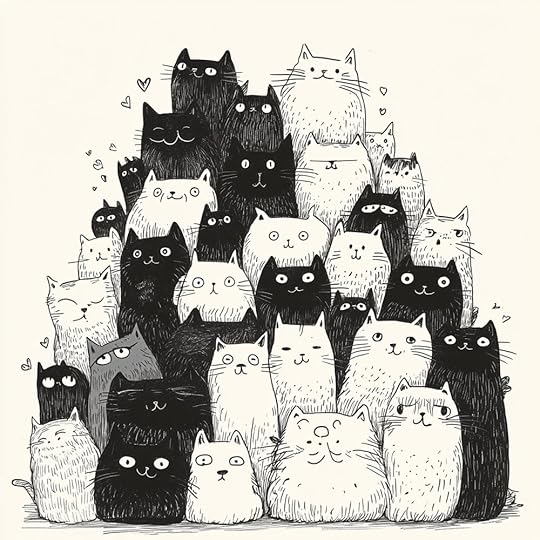
Image by Underchild using Midjourney.
We spend our time in meetings.
Meetings at work. Meeting friends. Meetings where we present and meetings where we are presented to. Meetings with all sorts of people. Meetings in the real world and meetings over screens and in the future meetings in virtual spaces.
In fact, many of us spend so much time in meetings that how we spend our time in meetings is how we spend a large part of our careers!
In business there are many who find meetings a waste of time and try to make them as short, small and few as possible. Many try to avoid meeting people and have gate keepers and delay tactics ready to brandish. Some leaders use meetings as ways to ensure discipline and instill fear.
A different way to approach meetings.There are a lot of books and articles on meeting management and how to get the most out of gatherings. Most of them are utter and complete BS because they all focus on how we can get the most out of a meeting, while the focus should be how can we give the most in a meeting.
If we go to a meeting with an “extraction” mindset versus a “giving” mindset we are likely face a number of problems including a) missing meetings where we may have been able to share our knowledge and therefore build goodwill and our reputation , b) become so focused on what we are looking for that we do not discover what we need and c) becoming over confident that we know more than anybody else that we do not learn and grow.
So, we might end up with less and less knowledge, find ourselves shocked and surprised at things that come from left field and suffer a diminished reputation.
To maximize our meeting experiences, we should focus on generosity, empathy and energy as the keys to meetings.
a) Generosity.
How can we leave the person or the people whom we are meeting with or presenting to with a gift? A gift of knowledge or insight or a way to see things that they did not have before. Something that makes them believe that it was a good use of their time to be in the meeting.
Besides knowledge some other ways to be generous include appreciation of their skills and their contributions. Everyone wants to be acknowledged and recognized for their good work.
Another way to be generous is to provide guidance. People are hungry for advice, directions and stories to navigate whatever challenge or situation they face. Providing perspectives, stories and experiences resonate and scale in empowering and growing people.
Knowledge. Appreciation. Guidance.
b) Empathy.
How can we truly understand the other persons perspective and point of view because in doing so we will grow even if you disagree with their perspective or view. If we are presenting, how can we make sure that our talk is relevant to the audience and the issues they have in mind and not some boiler plate boiled anew. Is it not ironic when speakers talk of relevance and customization and but do not customize or make relevant their content to their audience? Basically, they are saying that their time is more valuable than the audience!
Three ways to ensure empathy is to seek to understand by asking, listening and re-stating the problem and situation. By reframing the problem using analogies and other categories and finally by sharing relevant personal experiences.
Understanding signals we are listening. Re-framing telegraphs that the problem or challenge being faced has been shared by others. Personal experiences ensure a human connection and re-enforces that we have been in this person’s shoes or seen others who have been.
Understand. Reframe. Storytelling.
c) Energy.
How can we leave the folks in the meeting more energized and feeling better about themselves? So much of success is attitude, belief and hope. So many meetings leave folks dispirited, brow beaten, scared and worried. One does not have to be all bouncing beans unrealistic but let’s be pragmatically enthusiastic if we want progress.
There are three keys to ending a meeting with energy. First is clarity. People should be clear what next steps are for each of them. Second is belief which is a belief that they can tackle these next steps and finally a plan which is how they go about doing the next steps. At the end of every meeting are things clear, do people believe they have the tools and skills to do what is next and do they have a plan?
Clarity. Belief. Plan.
By focusing on giving versus getting we are almost guaranteeing a great meeting because at minimum the other folks leave the room better off and feeling positive about us. And in feeling that way they become an ally, a supporter and an advocate for us, so we get something out of it.
But what happens is much more. During the meeting once they understand that we are giving without asking, they give in return. Knowledge. Insights. Help. Lots of other stuff. Often in the meeting or as a follow up.
Finally, because we have treated their time as precious, they treat our time as precious.
And this approach to meeting works in both the real world and the virtual world. It works across every culture and country. It is effective in both personal and business situations.
Think about the other person or people.
And meetings become valuable, fun, educational and energizing.
Go beyond rethinking meetings to to Rethinking Work. Out Feb 4. Available for pre-order and bulk orders everywhere including now available for pre-order in India!
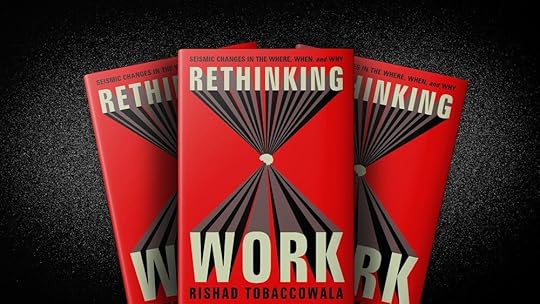
January 5, 2025
Paradox.

To be financially successful in the coming years, it’s not just about capitalizing on the new ways to make or save money.
The world is changing, setting up a situation in which organizations must learn to take two seemingly opposite actions in order to be profitable. As we move to distributed work, as technology advances, and as other trends transform society, a set of opposing but connected forces have emerged: Fragmentation and Integration.
Fragmentation is occurring because of the following four factors:
1. Employee range: different employee types have emerged, from full-time to part-time to contract worker to just-in-time employees hired through marketplaces.
2. Wider spectrum of resources: to get work done, companies are drawing from diverse places, including platforms such as Amazon Web Services and other cloud providers; different real-estate resources, from owned, rented, and accessed (WeWork); and varied ways to reach customers through traditional media, digital media, and more.
3. Differences in measurement: because of technology and a plethora of real-time data, companies can measure everything in astonishing detail, creating a wide variety of dashboards and metrics.
4. Customized products and services: companies now have a growing complexity of products and services in a world where customers expect personalized approaches and different ways to pay.
The Importance of Integration.As everything fragments into a mind-boggling variety of employee types, resources, measures, and products/services, organizations must integrate these various elements into a viable whole.
Specifically, they must create:
1. Seamless interfaces with employees regardless of employee types: consumers and customers do not want to see the complexity of different types of workers or where they may be based, so companies need to ensure seamless service and handoffs between employees. This complexity is only going to become worse at many companies, and leaders need to figure out ways to coordinate employee projects effectively.
2. Best combination of resources to manage costs: companies need to combine all the resources that go into creating products, to ensure lowest cost and continuous availability.
3. Integrated measurement and dashboards: businesses can combine myriad sources of data into an accessible, useable (by management) dashboard.
4. “Goldilocks” strategy for products and services: companies need a sufficiently large range of services and options to remain competitive but not so many that their complexity leads to increased cost and consumer confusion. The goal is to find the ideal mix.
Integrating all these elements in the face of fragmentation isn’t easy. Managing a paradox is challenging, requiring that leaders go beyond their traditional management strategies and try something new. Yet this is one of the keys to financial success in the future, making it worth the effort.
The most successful companies combine this personalization and customization at every interaction with a combined intelligence that integrates the data, focuses the choices to those most relevant while combining inputs in ways to maximize impact while minimizing costs.
The largest TV network in the world which is You-Tube is a case study of a company that on one end fragments individuals into one person media companies, personalizes messaging and content by viewer but integrates the measurement and the sales process to ensure ease by combining data and providing simplicity of access.
The future of not just media but every firm is this paradox of fragmentation through personalization by person and customization by platform, language and country on the edge combined with integration through data powered by AI algorithms at the core and center.
Work, organizational design, measurement, talent flows and company valuations will all be driven by the ability to handle the paradox.

The Rethinking Work Platform is launched.
Paradox is extracted from Rethinking Work which is 30 days away and available as a book, as an e-book and as an audio book (Feb 4, 2025 including in India). Now available for pre-order on every platform.
The book will be supported by Rethinkingwork.io which will include videos, podcasts, resources and much more. The initial pre-launch platform is up at Rethinkingwork.io. where you can watch videos of the key themes (Watch), download the entire opening of the book (What’s Inside), find comments from CEO’s and more who have read the book (Testimonials), access the first 3 amazing resources on where work is going (Resources) and find a range of places to buy including 25 copies or more at half off (Where to Buy).
There will be much more coming once the book launches.
Until then it would be terrific if you pre-order. This book will change your perspective on work and provide not just trends, cases and points of view but highly actionable frameworks, provocative new data and a vision for how to best thrive in the tsunami that has just begun regardless if you are a CEO or a trainee.
Work will change more between 2019 and 2029 than it has in the five decades before.
Rethinking Work is one way to prepare your firm and yourself.
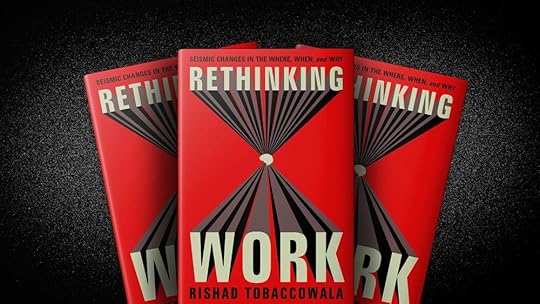
More on Rishad Tobaccowala here: https://rishadtobaccowala.com/bio
December 29, 2024
The Sense of an Ending.
For the last post of 2024 as many of us look back, a combination of visuals and words on the conflation of time and memory…

“What you end up remembering isn’t always the same as what you have witnessed.”

“History is that certainty produced at the point where the imperfections of memory meet the inadequacies of documentation.”

“It strikes me that this may be one of the differences between youth and age: when we are young, we invent different futures for ourselves; when we are old, we invent different pasts for others.”

“We live in time - it holds us and molds us - but I never felt I understood it very well. And I'm not referring to theories about how it bends and doubles back, or may exist elsewhere in parallel versions. No, I mean ordinary, everyday time, which clocks and watches assure us passes regularly: tick-tock, click-clock. Is there anything more plausible than a second hand? And yet it takes only the smallest pleasure or pain to teach us time's malleability. Some emotions speed it up, others slow it down; occasionally, it seems to go missing - until the eventual point when it really does go missing, never to return.”

“I thought of the things that had happened to me over the years, and of how little I had made happen.”

“How often do we write our own endings?”
Photography by Rishad Tobaccowala
Words by Julian Barnes from his book “The Sense of an Ending”
December 22, 2024
6 Keys to Career Success.

Image by Isabelle Watkins using Mid Journey
1) Align with emerging trends.To succeed you have to ensure that the force is with you.
And to do so you must align with the force.
Often this force appears as a stream and not a gushing river. A weak signal versus an overwhelming pull of gravity.
It may like the Chicago River in that it may be going in the opposite direction of how it should flow in that it does make you question what you believe or what your company or your CEO believes.
In the case of aligning with the trend, try to find a force that will grow over the next 10-15 years.
My career was built on aligning with digital in 1996, the rise of media as the driving force of agencies in 2000, the importance of data driven algorithmic story telling in 2010, and now the rise of the Company of One powered with the rise of new scale of talent, ideas and marketplaces and the decreasing importance of the scale of resources, distribution and spending.
 2) Who you work for is as if not more important than where you work.
2) Who you work for is as if not more important than where you work.Working for a successful company with momentum, name recognition and track record of success helps a career through a halo effect and also signaling that one is good enough to get in and to work at these well regarded and hot firms.
But, ask anybody who you believe has succeeded and most of them will signal the importance of the people they worked for.
The terms you will not hear are boss, manager, supervisor but rather leader, guide, mentor.
For mentorship and leadership the key is to find people who combine three elements:
a) Do they have a great reputation for excellence. Excellent work. Excellent Financial Results. Excellent People working for them. It is easier succeed when one is aligned with excellence and growth.
b) Do they have integrity. Do people use the words trust, candid, authentic, straight-shooter, transparent or similar words when describing them.
c) Do they have a coaching tree. Matt Gibbs who used to work with me and is now a successful leader after having sold the company he co-founded, recently shared a piece on The Coaching Tree of a Head Coach. This is exactly what it sounds like — a visual illustration of who head coaches have mentored and where those folks are now serving as successful head coaches. Those head coaches then have their own branches. And so on.
In the world of athletics, the coaches with a superlative Coaching Tree are considered the best of the best. Not only can they succeed with their own teams, but they can transfer their knowledge and skills to others. 20 of the 32 Coaches in the NFL today are related in some way to Bill Walsh of of the San Francisco 49ers.

Image by Diana Kozlova using Mid Journey
3) Maximize luck by seizing opportunities and thinking positively.If aligning with a trend and finding a great person to work for are the first two keys, the third is about something that matters a lot in a career and that is somewhat uncontrollable which is luck.
While luck is not under our control we can maximize the opportunities for luck to tap us on our shoulder by saying yes to as many assignments and opportunities as possible even if some seem really questionable.
In 1992, I was offered a role in the Direct Marketing Department of Leo Burnett vs a role in Client Service as the only way to get promoted to an Account Director since there were few openings on the big accounts with too many talented people vying for them.
Direct at that time was not understood by the mainline agency. It was filled with outsiders who spoke of A/B testing, mailing lists and direct to consumer communication. In fact it was so looked down upon that people believed I had doomed my future or was being punished when they found I was on the 34th floor. I therefore answered my calls (lots of calls vs emails those days) with the greeting this is Rishad from the Leper Colony.
Once they finished laughing I also told everybody the future of the marketing and the advertising industry was on 34 ( we were on the 34th floor of the Leo Burnett Building).
Well because of learning about the benefits and challenges of direct, I got the idea of launching the Leo Burnett Interactive Marketing Group with the support of Tom Collinger who ran the Direct area . Then convinced the Leo Burnett Board to “take the name of the door” by closing the Leo Burnett Interactive Marketing Group and launching Giant Step with Adam and Eric Heneghan so we could compete with a digital firms like Modem, Agency.Com, Organic, Digitas and Razorfish vs Leo Burnett’s traditional competitors. A few years later luck came calling via a call from Jack Klues then the head of the lowly back caboose of the agency train (media), asking that I join him and others in the unbundling of Leo Burnett Media to Starcom and launch Starcom IP.
Few hang out in the strange and supposedly less important parts of an organization but it is often there that the future is being forged.
The future comes from the slime, from outsiders, and from the quixotic.
Take a gamble and try your luck on something new and different and it will make all the difference.
 4) Never stop learning and never stop growing.
4) Never stop learning and never stop growing.The day you stop being a student is the beginning of the end of your career.
Especially today when knowledge is heading towards being free and the half like of expertise is growing shorter and shorter.
The picture above is the gravestone of Arthur C Clarke who is the author of 2001: A Space Odyssey. I uploaded the picture with a question mark to ChatGPT and here is what I got:
This is the gravestone of Sir Arthur Charles Clarke (1917–2008), the renowned British science fiction author most famous for works like 2001: A Space Odyssey. The inscription—“He never grew up, but he never stopped growing”—plays on Clarke’s lifelong sense of curiosity and imagination. Despite aging in years, he retained a “childlike” wonder about science, technology, and the mysteries of the universe. The phrase suggests that he kept learning, exploring, and inventing new ideas throughout his life—never losing his inquisitive spirit.
It doesn’t matter how senior or how powerful we are. The world is changing so much that even at this stage I spend an hour-and-a-half a day learning. Invest in continuous learning and education, because otherwise we will find ourselves growing increasingly irrelevant.
I remind senior executives who say they have no time to learn not to worry. Since they are not learning in a time of transformational change soon they will lose their jobs and they will have plenty of time to learn.
This shakes everyone out of their stupor and inertia.
 5) Success is driven by the people around us much more than us.
5) Success is driven by the people around us much more than us.As and when you become truly successful, you will realize that your success has been built on a very benign form of a Ponzi scheme.
You will be successful because the people around you are successful. And you will basically be given some sort of credit for the people around you.
Therefore, make sure that you really, really invest in the people around you because that is investing in yourself in everything, from training to relationships to looking after them and helping them along with their careers.
You can’t succeed, especially as you get more responsibility, unless you do that.

Image by Feliperafaelgilson using Mid Journey
6) Never take yourself too seriously.Take your work seriously.
Your Clients, Customers and Commitments seriously.
But never take yourself too seriously.
Be humble.
Be approachable.
Laugh at yourself and when people say you’re full of shit, you probably are.
Let them point out the turd on the table of your thinking (it’s not a Brownie, sir, this idea of yours but rather it is excrement!)
Humor is a key.
Another key maybe my new book which will prepare you and your firm for what is coming next! Lots of CEO’s, CTO’s and many more have said so.
Coming Feb 4, 2025 and available for pre-order is my new book. Take a look inside and more here: https://rishadtobaccowala.com/rethinking-work

December 15, 2024
Staying Human in the Age of Data.
A smart and worldly man, Tobaccowala has produced a deeply informed book about brand marketing, data science, and humanity that is a remarkably lively read. Name another book about business (or any other subject) that in one breath urges the reader to acknowledge “the turd on the table” in the boardroom and references François Truffaut’s The 400 Blows and Joan Didion in the next. - Marketing+Strategy Magazine Best Business Books 2020.
Next month it will be five years (Jan 28, 2020) since my first book was published just before the March 2020 Covid shutdowns. Despite the unfortunate timing and two years of not being able to travel to events to support the book, it ended up selling many tens of thousands of copies and continues to do well notching sales of hundreds of copies every month five years later.
The reason for its continued success is that the ideas and perspectives in every chapter in the book, each of which can be read as a free standing book ( I always wonder why most business books are just one chapter or idea repeated over a dozen chapters) not only have aged well but in many cases are even more relevant today than when the book was issued.
For instance the book had a chapter on AI, Blockchain and Immersive Computing (AR/VR) though it was published five years ago ! The book had a chapter on how to manage cultures and lead when people are working in distributed places staring at screens long before the Covid lockdown. The book makes the case for continuous learning with a chapter on how to upgrade one’s operating system, a chapter on how to manage change so it sucks less and a chapter on why companies that do not have cultures that allow one to call out the turd on the table end up failing and defeating themselves.
Every prediction and perspective from five years ago have come true and people believe the book was written last month! Often I hear how the book has been a competitive edge for many leaders and companies and among the best investment they made for themselves or their teams.
Here is what the Economist Magazine when reviewing a number of business books wrote:
Perhaps the best of the books is Mr Tobaccowala’s. That is because the author, a senior adviser at Publicis Groupe, an advertising and communications firm, has a clear focus: how to ensure you can hire, then inspire, the right workers in the knowledge economy. “Employees who find work meaningful are highly productive, agile and committed,” he writes, adding that talented workers are in a more powerful bargaining position in the current economy. He also argues that companies can be too obsessed with data, and not enough with employee motivation: “The best businesses find ways to marry the math and the magic.”
The book is clearly written and full of sensible and practical suggestions. They include assessing all meetings to eliminate those that waste time and suggesting that all employees spend 20% of each month trying to enhance their skills.
Many people also buy it today because they believe the subtitle of staying human in the age of data is no different than how to stay human in the age of AI.
If the book was a bottle of Japanese or Scotch whisky it should cost more due to its wonderful aging and vintage but instead it is available for just over $8 including shipping on Amazon and Walmart this week.
Here is the Amazon Link . This is the Walmart Link.
I wrote an essay on why people should allocate some of their most valuable resource which is time (rather than a few dollars) reading my book which I have republished below.
So if you are looking for a gift for yourself or your team for this Christmas or want to see how some things never change despite all the hype and swirl of change you might want to read about the issues that were key 5 years ago which seem to be the same today.
Often to succeed in a world of change maybe we should focus on what does not.
Here is the beginning of essay from five years ago. You can read the entire essay and what dozens of leaders wrote about the book and all the places you can get it here
Why Should You Read My Book?Time is all we have.
So why should you allocate a part of your most precious asset on engaging with this book?
Because my hope is that it will leave you seeing, thinking, and feeling differently about how to grow and remain relevant in transformative times.
How to grow yourself, grow those around you, and grow your practice, passion, or company.
How to remain relevant by understanding what it takes to make sense and thrive in a world of rapid technological, demographic, and global upheaval.
And it will do so by questioning much of what business takes for granted:
• Why data is often not the way forward and we may have too much of it;
• Why change sucks;
• Why having more—rather than fewer—meetings is better; and
• Why it is essential to have a culture and courage that calls out “the turd on the table.”
You not only will learn what makes great leaders but also how to deal with, or not become, a bad boss.
You’ll discover how to extract meaning from data and see poetry in the plumbing.
This book recognizes that while our world is increasingly filled with digital, silicon-based, computing objects, it is populated by people who remain analog, carbon-based, feeling creatures.
People like you.
And me.
Companies can choose to upgrade the skills of their people and reimagine the way they work or swap out their people and acquire new ways of working.
Often both are necessary.
This book is about upgrading the operating systems of people and companies by remembering the thinking-and-feeling component of the operating system.
A central premise is that successful individuals and firms can never forget the importance of people, their emotions, the culture of the organization, and what cannot be measured. I refer to this as the Soul of a Company.
This Soul is critical even as individuals and firms reinvent themselves for an increasingly AI-augmented, data-driven, networked and distributed, screen-based future.
As the world becomes more data driven and real-time twitchy, and as financial markets punish companies for failing to meet their goals, I worry that our short-term focus on numbers is destroying the long-term health of business, countries, and people. I worry we are losing our humanity in a world where modern, data-driven economies and cutting-edge technologies are seeping into all of life.
Yes, results, data, speed, and technology are keys for businesses to remain relevant and thrive. But while they’re necessary, they’re insufficient for long-term success.
Over the past five years, I have seen a significant tilt to the numeric, to the algorithmic, and to the measurable. This causes organizations to think short term, prize individualism, and adopt a mercenary mindset rather than think long term, prize teams, and adopt a meaningful mindset.
Increasingly there is a premium and a dominance on the quantitative, or what I call the spreadsheet, and a diminishment of the importance of the culture, humanity, emotion, and complexity of people, or what I refer to as the story.
Successful people and companies combine the story and the spreadsheet and by doing so restore the soul of business.
Here is the Amazon Link . This is the Walmart Link.
And coming on Feb 4 is my next book which is available for pre-order at all these places: https://rishadtobaccowala.com/rethinking-work

Rishad Tobaccowala has spent four decades rethinking and reinventing and now works across the globe helping leaders, teams and companies thrive in transformational times. More here: https://rishadtobaccowala.com/



